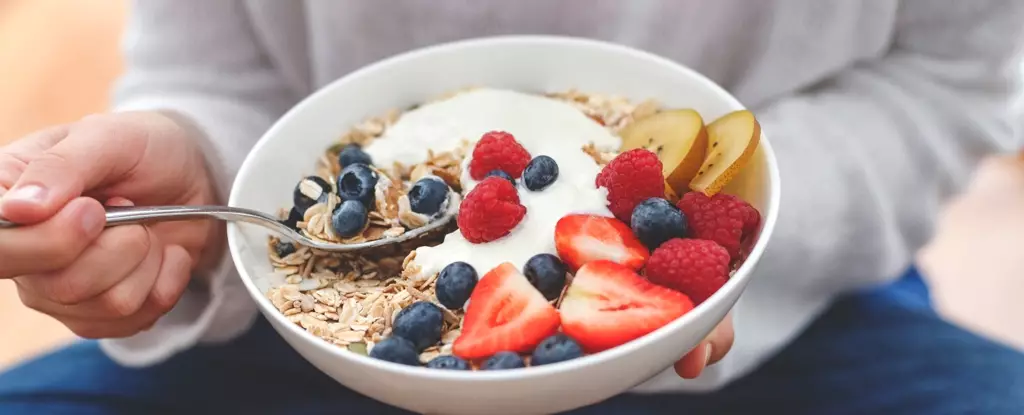In the past few years, the exploration of the human gut microbiome has sparked an unprecedented revolution within nutritional science. As researchers delve deeper into the intricate relationship between dietary habits and gut health, one glaring conclusion has emerged: dietary fiber is becoming paramount in the pursuit of optimal health. Once just a mere footnote in the dietary narrative, fiber is now being hailed as the “new protein,” emblematic of its importance in fostering a healthy gut environment. This resurgence in interest is not merely a trend; it is backed by an evolving body of research that emphasizes our need to reassess our fiber intake and its sources.
Despite the burgeoning awareness about fiber’s health benefits, startling data reveals that a shocking less than 5% of individuals in the U.S. meet the recommended daily intake of 25-30 grams. To bridge this gap, the market has seen a significant uptick in fiber supplements and ‘invisible fiber’ foods designed to enhance dietary fiber consumption discreetly. Yet, with an array of fibers available, the pressing question remains: which fibers deliver the most substantial health benefits?
An Eye-Opening Study on Fiber Effectiveness
Recent research conducted by a team from the University of Arizona (UA) and the University of Vienna underscores the complexity of fiber types and their varying effects on health. A compelling study using mice as subjects offers intriguing insights. Among various fiber supplements tested, it was oat-derived beta-glucan that stood out for its remarkable ability to control blood sugar levels and facilitate weight loss in mice on a high-fat diet. The team reported that beta-glucan was the only fiber capable of inducing significant fat reduction and body weight loss in the test animals over 18 weeks.
Frank Duca, a biomedical scientist involved in the research, articulated the necessity of discerning which fiber types are crucial for weight management and metabolic health. The study’s groundwork lies in understanding the types of fibers available in the market landscape while balancing the knowledge of their health implications. While fiber is labeled as universally beneficial, it is clear that not all fibers are created equal.
The Microbiome’s Favorite Fuel Source
At the heart of the fiber conversation lies its importance as a primary energy source for the bacteria residing in our gut. The gut microbiome, a complicated ecosystem of microorganisms, thrives on the fuel that fiber provides. Certain fibers, such as those found in oats and barley, are particularly appealing to these beneficial gut microbes due to their solubility and accessibility. In contrast, fibers like cellulose are often less fermentable and contribute differently to our overall gut health.
A key finding from the study is the distinct role of Ileibacterium, a specific bacterium associated with weight loss, which flourished in the presence of beta-glucan. This observation leads us to further investigate the links between specific fibers and probiotics, pushing the boundaries of nutritional science toward greater precision in dietary recommendations.
The Metabolic Benefits of Fiber
What is astonishing about beta-glucan is not merely its role in promoting weight loss; it’s also its capability to boost metabolic health. The study highlighted that mice consuming beta-glucan showed increased levels of butyrate, a short-chain fatty acid crucial for gut health, generated when fiber is fermented by gut bacteria. Butyrate is noteworthy for its multifaceted functions, including the enhancement of gut barrier integrity and potential effects on peripheral organs like the liver.
Duca elaborates on these implications, linking butyrate to the release of glucagon-like peptide-1 (GLP-1)—a potent hormone that regulates appetite and insulin secretion. While synthetic drugs such as Ozempic leverage GLP-1 to promote metabolic health, the discovery of dietary pathways to stimulate similar benefits marks a pivotal advancement in health science. The potential for dietary interventions illustrates that the benefits of fiber extend beyond simple satiety to encompass broader metabolic advantages.
Considering Future Research and Applications
While the findings derived from this study illuminate the significance of specific fibers, it is vital to approach conclusions with caution. We are still far from translating these results into applicable insights for human dietary protocols. The nuanced roles of various fibers necessitate continued investigation into their metabolic impacts and how they can be optimized in everyday diets.
Understanding the depth of fiber’s impact on health is integral to shifting collective dietary practices. As the nutritional landscape evolves and emphasis on the gut microbiome escalates, it is imperative for consumers and the agricultural industry to prioritize high-quality fiber sources. Whether through natural foods or fortified supplements, the pathway to health could lie in our understanding and application of the varying types of dietary fibers available to us. Nourishing our gut microbiome may hold the key not just to weight loss, but to overall well-being.


Leave a Reply